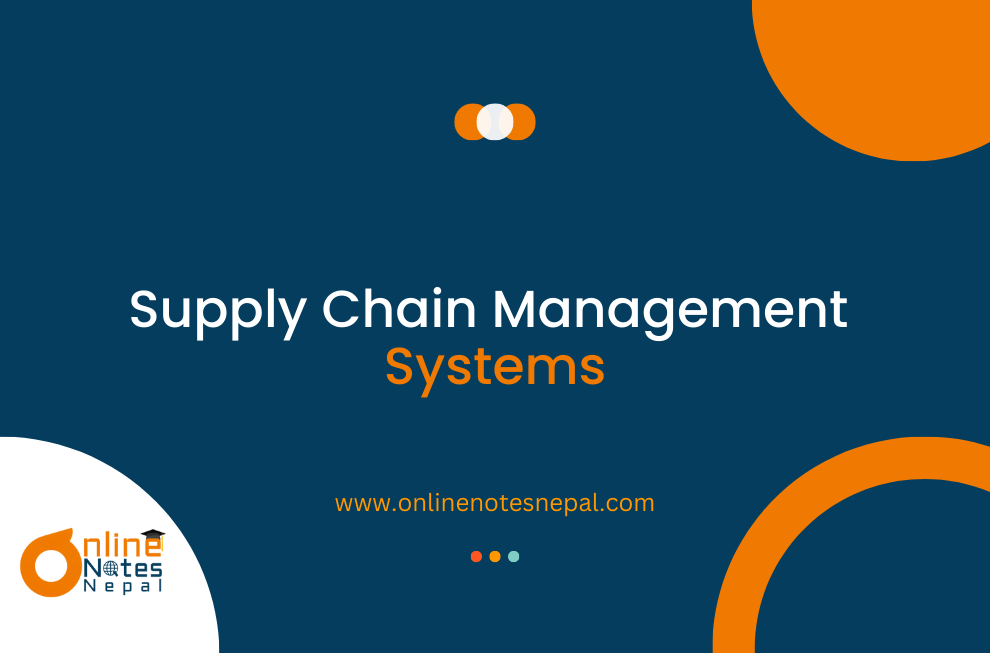Supply Chain Management Systems
Supply Chain Management Systems (SCMs) are software tools and platforms that manage and optimise the flow of goods, information, and funds from suppliers to manufacturers, wholesalers, retailers, and eventually consumers.
Key Functions of SCMS
Supply Chain Planning (SCP)
Helps forecast demand, plan inventory levels, and ensure that the supply chain is efficient and responsive.
- Features: Demand forecasting, supply planning, production planning, and sales and operations planning (S&OP).
Supply Chain Execution (SCE)
Focuses on the execution of supply chain processes, ensuring products are efficiently produced, stored, and transported.
- Features: Warehouse management systems (WMS), transportation management systems (TMS), order management systems (OMS), and logistics management.
Procurement
Manages the acquisition of raw materials and goods needed for production.
- Features: Supplier management, purchase order management, contract management, and spend analysis.
Inventory Management
Tracks and manages inventory levels to ensure optimal stock levels and reduce holding costs.
- Features: Real-time inventory tracking, automated replenishment, stock optimization, and inventory forecasting.
Product Lifecycle Management (PLM)
Manages the entire lifecycle of a product from inception, through engineering design and manufacturing, to service and disposal.
- Features: Product design, collaboration tools, compliance management, and lifecycle tracking.
Logistics and Transportation Management
Optimizes the movement of goods from suppliers to customers.
- Features: Route planning, carrier selection, freight auditing, and shipment tracking.
Customer Relationship Management (CRM)
Manages interactions with customers to improve satisfaction and loyalty.
- Features: Customer data management, order history tracking, customer service tools, and feedback management.
Supplier Relationship Management (SRM)
Manages interactions with suppliers to ensure a reliable supply of goods and materials.
- Features: Supplier performance monitoring, collaboration tools, procurement management, and risk assessment.
Analytics and Reporting
Provides insights into supply chain performance and helps in making data-driven decisions.
- Features: Dashboards, key performance indicators (KPIs), trend analysis, and predictive analytics.
Benefits of SCMS
- Improved Efficiency: Streamlines processes, reduces manual work, and improves coordination among different parts of the supply chain.
- Cost Reduction: Identifies cost-saving opportunities through better inventory management, optimized logistics, and efficient procurement.
- Enhanced Visibility: Provides real-time data and insights into supply chain operations, helping to quickly identify and address issues.
- Better Collaboration: Facilitates communication and collaboration among suppliers, manufacturers, and customers.
- Risk Management: Helps in identifying and mitigating risks associated with supply chain disruptions.
- Scalability: Adapts to changing business needs and supports growth.
Challenges in Implementing SCMS
- Integration: Ensuring the SCMS integrates well with existing systems and processes.
- Data Quality: Maintaining accurate and up-to-date data across the supply chain.
- Cost: High initial investment and ongoing maintenance costs.
- Change Management: Managing the transition and ensuring that employees adapt to the new system.
- Complexity: Dealing with the complexity of supply chains, especially in global operations.
Conclusion
Supply Chain Management Systems are critical tools for modern firms to manage and optimise their supply chains. They provide various advantages, including higher efficiency, cost savings, and more visibility. However, successful deployment necessitates meticulous design, integration, and administration in order to overcome obstacles and fully realise the promise of these systems.
